
|
While you think most of the behavior, moods and feelings you have are something you control, much of it is beyond our ability and is in fact involuntary reactions in our brains. Luckily scientists have been hard at work investigating neurons, and whether some of them can be controlled, like the on and off of light switches. |
|
|
Thirst The hypothalamus area of the brain controls thirst and inquiring neuroscientists at Colombia University identified two sets of neurons relating to hydration. Via experiments with mice, the scientists activated these neurons. They found that the mice became extremely thirsty despite being adequately hydrated, and the inverse happened when the second neuron was activated: they failed to drink despite not being properly hydrated. |
|
|
Hunger Like with thirst, scientists at John Hopkins University wanted to see if hunger could be controlled. After locating the neurons responsible for eating impulse, these researchers activated and blocked these neurons in mice. They had similar results to their Colombia University peers, with the mice overeating despite being full and showing no interest in food despite having real hunger. This discovery has tremendous relevance for eating disorders and weight control. Consciousness
Pain While pain can be dulled and eased with drugs, there is the drawback of nasty side effects. Through their work trying to alleviate chronic pain researchers at St. Louis University found that activating the A3 adenosine receptor in either the brain or the spinal cord of rodents allowed for pain to be successfully blocked. |
|
|
Violence Neuroscientists at New York University manipulated neurons associated with violence in mice. The team effectively transformed mice into violent aggressors and then placated them into peaceful creatures. Interestingly the team also found that the neurons relating to violence overlap with neurons relating to love making, and that love making would temporarily curb the mice’s need for violence. |
 |
| Source | |
|
Habits Neuroscientists working with rats discovered that there are neurons associated with forming habits and that these could also be controlled. Experiments set up in mazes allowed the rats to be cured of repetitive habits. While at present this is not transferable to humans, there is value in further research down this avenue for future habit curtailing treatments. Depression, Parkinson’s, and Possibly Alzheimer’s The University of Toronto neurosurgeon Andres Lozano has been using electricity to trigger misfiring neurons to work and curb abnormal neurons from firing. He has been using this method to treat depression and shaking in Parkinson’s. Presently Lozano has launched a clinical trial for mild Alzheimer’s sufferers to see if electrical stimulation works with rejuvenating memory and cognitive decline. The results will be released in a few months. It’s exciting to know the ways scientists are researching our brains and to hear about the possibilities that await us in the future. |
|
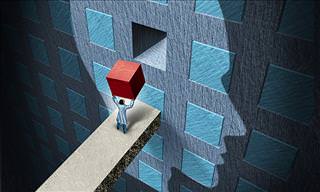
These Interesting Psychological Facts Are Handy to Know
The human mind is one of the biggest mysteries in science, but that doesn't mean to say scientific progress hasn't been made. Learn these interesting facts.
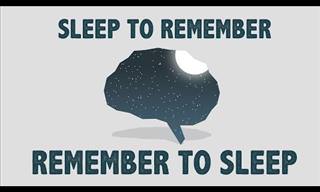 5:45
5:45
Memory Not Working? The Answer May Be Hiding in Your Sleep
If you want to remember better, this lecture will tell you - The answer is in your sleep.

New Research Reveals a Link Between Bacteria & Alzheimer's
Groundbreaking new research has found a connection between Alzheimer's disease and certain types of bacteria in the brain. Learn more here.

This Study May One Day Help Treat Chronic Stress And PTSD
A recently discovered protein in the brain (p11) can be linked to both depression and stress and has the potential to help future treatments
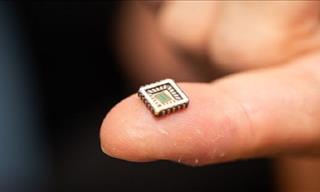
This New Artificial Neuron Will Help Fight Heart Failure
Read how a team of scientists invented an artificial neuron that could go on to be a major help to cure chronic neurodegenerative diseases.

Knowing the Signs of a Brain Tumor Can Save Your Life...
Learn what the most common symptoms of a brain tumor are, so that it can be picked up and treated before it's too late.
 5:41
5:41
Burn Belly Fat While Sleeping With This Amazing Drink!
Dr. Alan Mandell has designed a safe and healthy concoction that can help burn your belly fat. How does it work? Find out here.
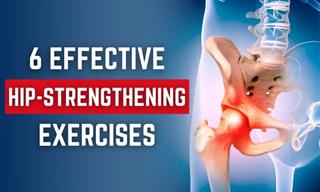
How to Strengthen and Stabilize the Hips Through Exercises
These senior-friendly exercises will help you strengthen the hips and improve your sense of balance.
 8:05
8:05
How to Get Rid Of a Sore Throat: Remedies That Work
Troubled with a sore throat? These natural and safe remedies are proven to be effective.
 5:07
5:07
Forget Pills! Here's How to Naturally Ingest Aspirin
Did you know that aspirin's active ingredient can be obtained from many different kinds of plants? Find out more here.
 16:23
16:23
Stiff Ankles? Fix Them Fast with These 3 Exercises
Struggling with stiff ankles? Try these simple exercises today.

Dawn Phenomenon: When You Wake Up With High Blood Sugar
If your sugar levels are high when you wake up in the morning, you may be experiencing what is called "Dawn Phenomenon".
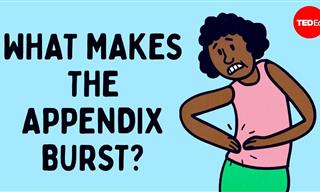 5:38
5:38
Everything You Need to Know About Appendix Pain
This video walks us through the untruths and facts of appendicitis.
 15:36
15:36
A Simple Workout for Joint Pain and Cardiovascular Health
If you aren't as mobile as you used to be, this video is for you.
 3:33
3:33
How to Survive a Heart Attack if You Are Alone
Learn how to survive a heart attack if you're alone using a useful Chinese breathing method.
 4:45
4:45
Have You Been Eating These Foods Wrong This Whole Time?
Learn how you might have been eating some fruits and veggies the wrong way all this time and not getting their full benefits.
 4:31
4:31
Is Your Supplement Safe? Try These Simple Tests to Know
How can you tell if a supplement is a fake? Watch this video to find out...
 3:14
3:14
Let's Talk About the Anti-Cancer Benefit of Sweet Potatoes
Lets Talk About the Anti-Cancer Potential of Sweet Potatoes
 6:09
6:09
The Strange Unexpected Reasons Why Seniors Wake Up Earlier
It's NOT a myth, seniors often do get up much earlier in the morning than younger people, and this video explains why this might be happening...

9 Habits That Protect You From Fungal Infections
If you suffer from some of these symptoms, there are a number of home remedies that can easily treat fungal infections.

Wow! Who Knew That Potatoes Had Such Health Benefits?
Check out these 7 different health benefits of potatoes. Just remember to go easy on the butter and cheese!
 2:14
2:14
Why Eating Slowly Could Change the Way You Feel Every Day
Eating at a slower pace can be highly beneficial for your health in more ways than one.
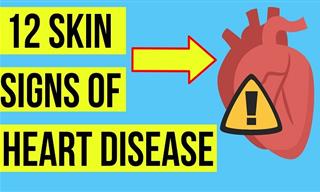 8:45
8:45
12 Skin & Nail Warnings of Heart Health Concerns
These skin and nail signs may indicate heart issues.
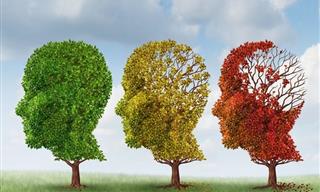
7 Signs Your Brain is Much Younger or Older Than Your Age
Depending on your health, lifestyle, and personality, your brain age might be much younger or older than it seems...

These Drinks Give Your Brain a Massive Health Boost!
We prepared a list of 10 excellent beverage suggestions that will both hydrate you and boost your brainpower.

4 Areas in the Body Women Must Exercise and How to Do So
In the following article we explore 4 important body areas for women to improve and exercises to do so.
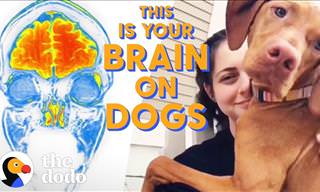 4:52
4:52
The Many Mental and Emotional Benefits of Owning a Pet Dog
Dogs are loving, cute and fiercely loyal, but can they actually provide us emotional and mental support?
 8:31
8:31
Doctor Explains: How to Sleep with Neck Pain
Stop letting neck pain ruin your rest—watch the video and start sleeping more comfortably tonight.
 1:11
1:11
Here's How to Clear a Stuffy Nose Instantly
There are some truly bizarre methods for clearing a stuffy nose out there, but they really seem to do the trick. Learn these methods today.
 13:59
13:59
Why Your Blood Pressure Numbers Might Be Inaccurate
These simple mistakes can lead to wrong blood pressure numbers.
 13:04
13:04
At 98, This Doctor wasStill Sharp. What was His Secret?
What is the secret to a long healthy life by one who has done it himself.

Discover the Many Health Benefits of Massage Therapy
Learn about the different types of massage therapy, each dealing with a different health problem.
 6:49
6:49
5 Effective Ways to Get Rid of Bunions Without Surgery
Struggling with bunion pain? These tips will help.

Can What You Eat Raise Our Risk of Parkinson’s?
An extensive American study has found that daily consumption of ultra-processed foods—such as snacks, hot dogs, sugary drinks, and packaged pastries—may double the risk of developing early neurological symptoms linked to Parkinson’s disease.
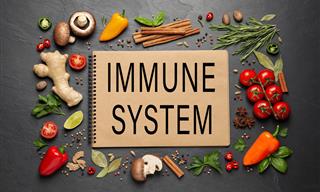
10 Foods That May Weaken Your Immune System
The relationship between diet and immune function is profound. A nutrient-dense, well-rounded diet acts as fuel for your immune system, while a diet low in nutrients and high in ultra-processed foods can significantly impair your body's immune system

All About Bacillus Cereus Food Poisoning
This poisoning earned the nickname "fried rice syndrome" in the early 1970s.

Protecting Yourself from Medical Errors: A Patient's Guide
Medical negligence is on the rise – here’s how you can keep yourself safe from it.
 7:10
7:10
Guide: How to Set Achievable Health Goals for the New Year
Here's a guide on how to set meaningful health goals for 2025.
 5:41
5:41
Suffer From Joint Pain? You Should Eat More Apple Peels
Could eating more apple peels reduce the effects of chronic joint pain? This video explains.
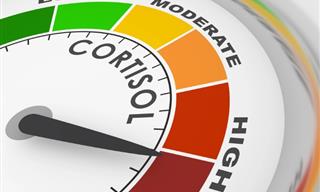
Can a 'Cortisol Cocktail' Actually Reduce Stress?
This trendy beverage, dubbed the "cortisol cocktail," has taken the wellness world by storm.

10 Daily Habits that Contribute to Your Lower Back Pain
Here are 10 daily activities that might be causing your back pain and that you should be aware of in order to stop them.
 4:46
4:46
The Sweet Trap: Sugar’s Role in Modern Health Crises
Sugar is one of the most harmful substances that can harm people - here's a film that highlights how harmful it is to the body.

10 Cholesterol-Rich Foods: Which are Healthiest to Eat?
This article looks at which cholesterol-rich foods are more recommended and which are less.

Microbreaks: How to Protect Yourself from Burnout
How to cope with prolonged times of inactivity with microbreaks.
 5:18
5:18
Test Your Hearing: Can You Hear that Last Sound?
As we grow older, we can hear less and less sound frequencies. How young are your ears? Take this audio test.
 5:21
5:21
A Few Facts You Probably Don’t Know On Salmon
Salmon - the different varieties, health benefits and more interesting facts you probably didn’t know about this popular fish
 11:06
11:06
These Home Remedies Will Work All Year Round
Tried and tested, science-backed, foolproof - these 6 home remedies are the real deal!
To enable your Ad-Free Subscription, please fill the fields below
Your subscription was successful, now you can enjoy an ad-free experience!! Note: To make sure you get no ads, please make sure to log in to your account. If you are logged in already, then refresh the page. The subscription can be cancelled at any time.




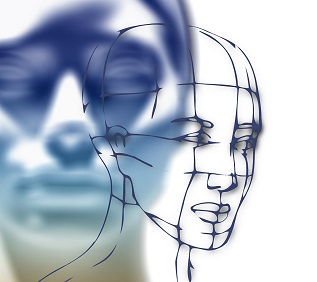 It seems consciousness and awareness go hand in hand. While researchers at George Washington University were stimulating a woman’s claustrum (a passage of neurons in the cerebrum), they unintentionally caused her to lose consciousness but not fall asleep. The result was puzzling as the patient was awake but remained stationary, not responding to any stimuli and had no memory of this time when she regained consciousness. Similarly, through other studies it’s been shown that the humans can switch off their self-awareness when stressed. It has also been observed that when forced to focus on deadlines, the cortex ushers in a robotic like mode of consciousness.
It seems consciousness and awareness go hand in hand. While researchers at George Washington University were stimulating a woman’s claustrum (a passage of neurons in the cerebrum), they unintentionally caused her to lose consciousness but not fall asleep. The result was puzzling as the patient was awake but remained stationary, not responding to any stimuli and had no memory of this time when she regained consciousness. Similarly, through other studies it’s been shown that the humans can switch off their self-awareness when stressed. It has also been observed that when forced to focus on deadlines, the cortex ushers in a robotic like mode of consciousness.